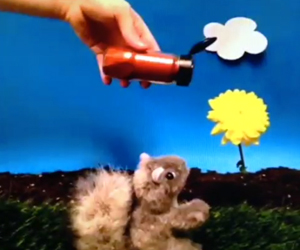 To say I’m not much of a handyman would be an understatement.
To say I’m not much of a handyman would be an understatement.
I’m my father’s son—a Boston sports fan through and through, hardworking and always trying to please. But he and I know absolutely nothing about maintenance or repair work. So when I recently bought my first house with my wife, the renovations we opted to complete ourselves weren’t going to be easy, no matter how simple they were.
But in the connected world we live in, help was no further away than a YouTube search. Hanging towel racks, painting stripes and installing the Nest thermostat (a must-have, IMO), lighting fixtures and house numbers—if my father-in-law wasn’t around to help, the good ol’ Internet was.
In situations from home improvement to fitness and more, brands have a golden opportunity to provide useful information to an audience that is seeking answers, but it seems they are instead trying to engage audiences with the type of content most often seen going viral—fun, quirky and amazing (amazingly good and amazingly bad) content like Gangnam Style, Kony 2012, Red Bull’s Stratos project, Grumpy Cat and Old Spice’s “The Man Your Man Could Smell Like.” Problems can arise quickly when brands try to re-create content like this, and most such efforts will fall flat.
So what’s a brand that is ready and willing to create useful content to do? The recent #SixSecondFix campaign by Lowe’s may be the perfect answer.
Blazing a Trail Through The Vines
The home improvement store got some great press last week when it launched its spring campaign on Vine. The campaign featured six-second fixes for common problems, like stripped screws, forgotten paint tray liners and lost water cans. (If the Vine doesn’t play, simply click on it)
The notion of providing quick-fix videos on Vine isn’t groundbreaking (people have been putting how-to videos on YouTube for years), but until now most of the industry back patting of brands on Vine has been for fun, pithy stop-motion videos featuring products instead of solutions. Taco Bell, Malibu Rum, Urban Outfitters and General Electric are often-cited Vine case studies.
Unique product-based posts, like Taco Bell’s announcement of its Cool Ranch Doritos Locos Tacos, have proven to increase engagement, but eventually that engagement has to lead to something. Granted, a new product announcement can create awareness and lead to sales (I’m a big fan of Taco Bell’s social strategy, actually), but most brands don’t release new products every day. Lowe’s’ vines (which are professionally produced stop-motion) provide actionable, useful tips that can lead to a trip to Lowe’s to pick up supplies. Even if the fix doesn’t require additional supplies, like pillowcases for the purpose of organizing sheets, it will keep Lowe’s top of mind when the idea of home improvement comes up.
Fun Versus Useful
We all want to be liked. It’s no different for brands. So it’s no surprise when brands make an attempt to be funny in hopes that the humorous content will be liked and shared by its audience, or even go viral. Don’t get me wrong—I love it when a brand hits comedy paydirt. Newcastle is my new favorite Facebook presence. Dollar Shave Club and Old Spice are two of the poster children for funny, viral content, and AT&T’s “It’s Not Complicated” TV campaign makes me laugh every single time. But if a brand’s content isn’t funny (and let’s face it, most of the time it isn’t), like a tree falling in the woods, will anyone engage with it? Probably not.
On the other hand, while a steady stream of useful content may not hit the viral home run that a brand like Oreo did, it can create a strong connection between brand and audience, adding meaning to the relationship (Lowe’s means home improvement). This type of content also requires less planning and budget than content with top-of-the-charts viral aspirations. But ultimately, an effort from a brand to openly and honestly engage with audiences, whether it be a useful tip or the celebration of fan content, is what increases People Talking About This (PTAT) and humanizes a brand.
Award-winning Versus Effective
Lowe’s may be the exception to the rule, since it was the first mainstream brand, but the brands that follow in its footsteps on Vine (and there will be many, for sure), particularly smaller brands with limited budgets, probably won’t be winning any awards at Cannes and the like. But don’t let the lack of award hardware fool you. Campaigns that consistently provide relevant, useful content to the audience that generates engagement and sharing can be extremely valuable to a brand, even if none of the singular content pieces ever go viral.
This isn’t limited to how-to videos on Vine, either. Simply committing to an always-on mentality, offering useful content, replying to and speaking to fans, republishing their content, providing simple (but not overly branded) imagery and videos and glimpses behind the curtain can engage and increase audiences.
It’s not always about over-the-top humor or yet another product photo. Sometimes your customers need you.



Pingback: 4 Lessons in Creating Dynamic Social Content | Post-Advertising, a Story Worldwide Blog
Pingback: Link Friday Week 13 - Web Hosting Blog
Pingback: Why Instagram Isn't a Vine Killer | Post-Advertising, a Story Worldwide blog
Pingback: vine tastings … | epic sparks
Pingback: vine tastings . . . | epic sparks